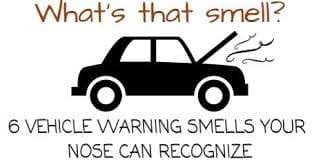
By paying attention to your car, you can diagnose engine problems, with your sight, hearing, touch and smell.
Most of the time the driver, will be the first to notice, when something is starting to go wrong.
They can see, when they have a chip in their windshield. You can smell, the engine getting too hot. You can hear, the brakes squeaking.
So, with just a basic level of understanding, almost anyone can diagnose engine problems, with nothing more than their senses. Consequently, being able to diagnose engine problems, takes years of experience. But, you can use your senses, to get an idea of what’s causing the problem.

Consequently, your sense of sight, hearing, touch, and smell, are the only tools you’ll need.
Diagnose Engine Problems, By Using Your Senses
So, the better you are at using your sense, the more likely you’ll be able to head off repair problems.
You can detect many common vehicle problems by using your sense:
- Eyeballing the area around your vehicle.
- Listening for strange noises.
- Sensing a difference in the way your vehicle handles.
- Noticing unusual odors.
First Pay Attention To, What You See

So, small stains or an occasional drop of fluid under your vehicle, may not mean much. But, wet spots deserve attention, so, check puddles immediately.
Consequently, you can identify fluids by their color and consistency:
- Yellowish green, pastel blue or fluorescent orange colors indicate, an overheated engine. Also, an antifreeze leak caused by a bad hose, water pump or leaking radiator.
- A dark brown or black oily fluid means, the engine is leaking oil. Consequently, a bad seal or gasket, could cause the leak.
- A red oily spot, indicates a transmission or power-steering fluid leak.
- A puddle of clear water, usually is no problem. It may be normal condensation, from your vehicle’s air conditioner.
Something Else you My See Is Exhaust Smoke

Confirming the color of the exhaust smoke will get you well on the way of knowing where to look.
Diagnose Engine Problems, By Following Your Nose

Some problems are under your nose. You can detect them by, their odor:
- The smell of burned toast – a light, sharp odor, often signals an electrical short and burning insulation. To be safe, try not to drive the vehicle, until the problem is diagnosed.
- The smell of rotten eggs. A continuous burning-Sulphur smell – usually indicates, a problem in the catalytic converter or other emission control devices. Don’t delay diagnosis and repair.
- A thick acrid odor usually means burning oil. So, look for signs of a leakage.
- The smell of gasoline vapors after a failed start, may mean you have flooded the engine. Wait a few minutes before trying again. Hence, if the odor persists, chances are, there’s a leak in the fuel system. A potentially dangerous problem, that needs immediate attention.
- Burning resin or an acrid chemical odor, may signal overheated brakes or clutch. Check the parking brake. Stop. Allow the brakes to cool, after repeated hard braking on mountain roads. Light smoke coming from a wheel indicates, a stuck brake. As a result, the vehicle should be towed for repair.
- A sweet, steamy odor indicates a coolant leak. Consequently, if the temperature gauge or warning light does not indicate overheating, drive carefully to the nearest service station. Above all, keeping an eye on your gauges. If the odor is accompanied by a hot, metallic scent and steam from under the hood, your engine has overheated. Pull over immediately. Because, continued driving, could cause severe engine damage. Above all, the vehicle should be towed for repair.
Don’t Ignore, Your Ears

So, squeaks, squeals, rattles, rumbles, and other sounds, provide valuable clues about problems and can help you diagnose engine problems.
Here are some common noises and what they mean:
Squeal – A shrill, sharp noise, usually related to engine speed:
- Loose or worn power steering, fan or air conditioning belt.
Click – A slight sharp noise, related to either, engine speed or vehicle speed:
- Loose wheel cover.
- Loose or bent fan blade.
- Stuck valve lifter or low engine oil.
Screech – A high-pitched, piercing metallic sound, usually occurs while the vehicle is in motion:
- Caused by brake wear indicators, to let you know it’s time for maintenance.
Rumble – a low-pitched rhythmic sound:
- Defective exhaust pipe, converter or muffler.
- Worn universal joint or other drive-line component.
Ping – A high-pitched metallic tapping sound, related to engine speed:
- Usually caused by using gas with a lower octane rating than recommended. Check your owner’s manual for the proper octane rating. If, the problem persists, engine ignition timing could be at fault.
Heavy Knock – A rhythmic pounding sound:
- Worn crankshaft or connecting rod bearings.
- Loose transmission torque converter.
Diagnose Engine Problems, By What You Feel

Because, difficult handling, a rough ride, vibration and poor performance, are symptoms you can feel. Therefore, they almost always, indicate a problem.
The following symptoms indicate, engine trouble. Get a diagnosis and schedule the repair:
- Difficulty starting the engine.
- The “check engine” light on the instrument panel is lit.
- Rough idling or stalling.
- Poor acceleration.
- Poor fuel economy.
- Excessive oil use (more than one quart between changes).
- Engine continues running after the key is removed.
Car trouble doesn’t always mean, major repairs. So, here are some common causes of trouble and techniques, to help you and your technician diagnose engine problems:
- Alternator Loose wiring can make your alternator appear defective. Your technician should check for loose connections and perform, an output test before replacing the alternator.
- Battery Corroded or loose battery terminals, can make the battery appear dead or defective. Your technician should clean the terminals and test battery function, before replacing the battery.
- Starter What appears to be a defective starter actually, may be a dead battery or poor connection. Ask your technician to check all connections and test the battery, before repairing the starter.
- Muffler As a result, a loud rumbling noise under your vehicle. Indicates a need for a new muffler or exhaust pipe.
- Tune-up The old-fashioned “tune-up” may not be relevant to your vehicle. Fewer parts, other than belts, spark plugs, hoses and filters, need to be replaced on newer vehicles. Finally, follow the recommendations, in your owner’s manual.
Conclusion
So, if you do happen to sense abnormal smells, noises or any of the signs above from your car. Then, be sure to seek assistance.
BY DANNY BENDER




